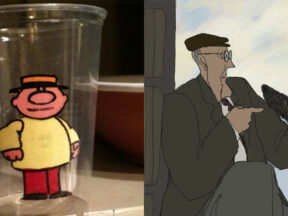

Designing Vlad and Bela: In-Depth With ‘Hotel Transylvania 2’ Production Designer Michael Kurinsky
Heading into its fifth weekend at the U.S. box office, Genndy Tartakovsky’s Hotel Transylvania 2 has proven to be a crowd-pleaser in both the United States and abroad, cementing the Drac Pack’s status as a valued franchise for Sony Pictures Animation.

One of the key creative figures on this second trip to Hotel T was production designer Michael Kurinsky. While it’s Kurinsky’s first outing as a feature film production designer, he’s enjoyed a distinguished career in animation, including a decade at Disney painting backgrounds on hand-drawn films such as Hercules, Tarzan, Fantasia/2000, and Atlantis: The Lost Empire. For the last dozen years, he’s been at Sony, where he’s contributed to most of their animated projects, including art directing the splashy universe of Cloudy with a Chance of Meatballs.
As production designer of Hotel Transylvania 2, Kurinsky was responsible for expanding the world while maintaining visual consistency with the original film’s universe. Among the most memorable expansions in the new installment were the introductions of Dracula’s father, Vlad (voiced by Mel Brooks), and his menacing sidekick Bela (Rob Riggle). I spoke with Kurinsky at length about the process of creating these characters, their environment, and how they evolved through the course of the production.
Michael Kurinsky: Vlad originally wasn’t in the first script. We had a completely different villain: it was this real estate mogul named Quinston and they were trying to get Quentin Tarantino to be the voice. Actually the designs looked a lot like Quentin Tarantino. And two things happened. One, Quentin Tarantino turned down that role, and two, it just didn’t work after they did a first screening. You know, you’re in this monster world and your villain is a human real estate developer who wanted to turn the Hotel Transylvania into a theme hotel, kind of like the W. I think it was going to be called the T, and he wanted to put them all over the world.

So, Genndy came up with this idea: What if Dracula had a dad? In the final version of the movie, Mavis does know about Grandpa Vlad because she says it in the wedding sequence, but in the original, she didn’t even know she had a grandfather; he was a recluse. He and Drac were estranged from each other; that was the tone. So we were like, “This is cool. He’s really old school monster.” This union of Mavis and Johnny would be very upsetting for him. And you’d get this backstory that Drac and Vlad had some sort of bad fallout and they haven’t talked to each other for 600 years or something crazy like that.
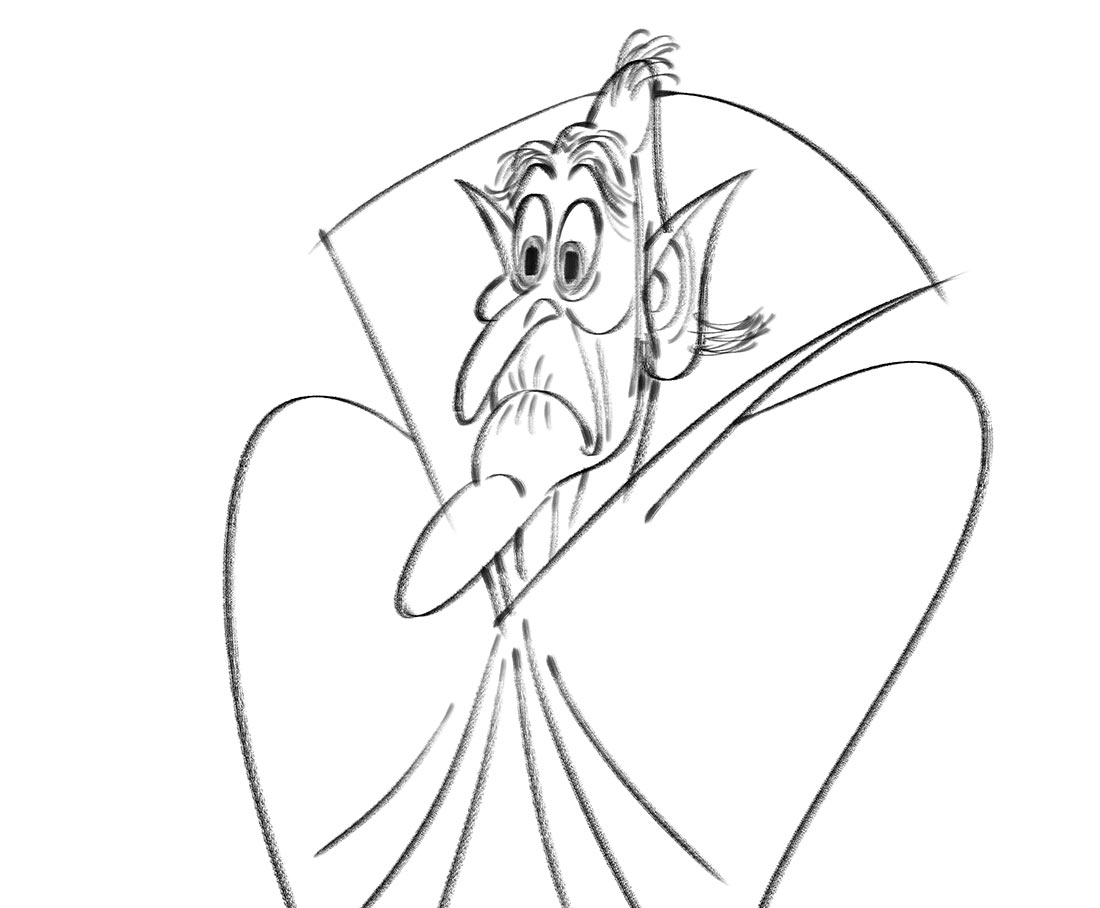
Vlad was thrown out to two different artists: Craig Kellman and Andre Medina. Andre did some really funny stuff; picture like Danny DeVito being Vlad. This is before we knew who the voice was going to be. So he had these little tiny stumpy looking guys, and then he had these sort of dandified looking guys, almost like Gary Oldman when he was playing Dracula. We had a big range, but when Craig’s stuff came in, we got the most laughs out of those. When Craig heard Mel Brooks was doing the voice, a design came in from him, and we told him we liked that design. The next thing we knew we got a bunch of expression sheets back from Craig and now you could almost hear Mel Brooks’ voice coming out of those drawings.
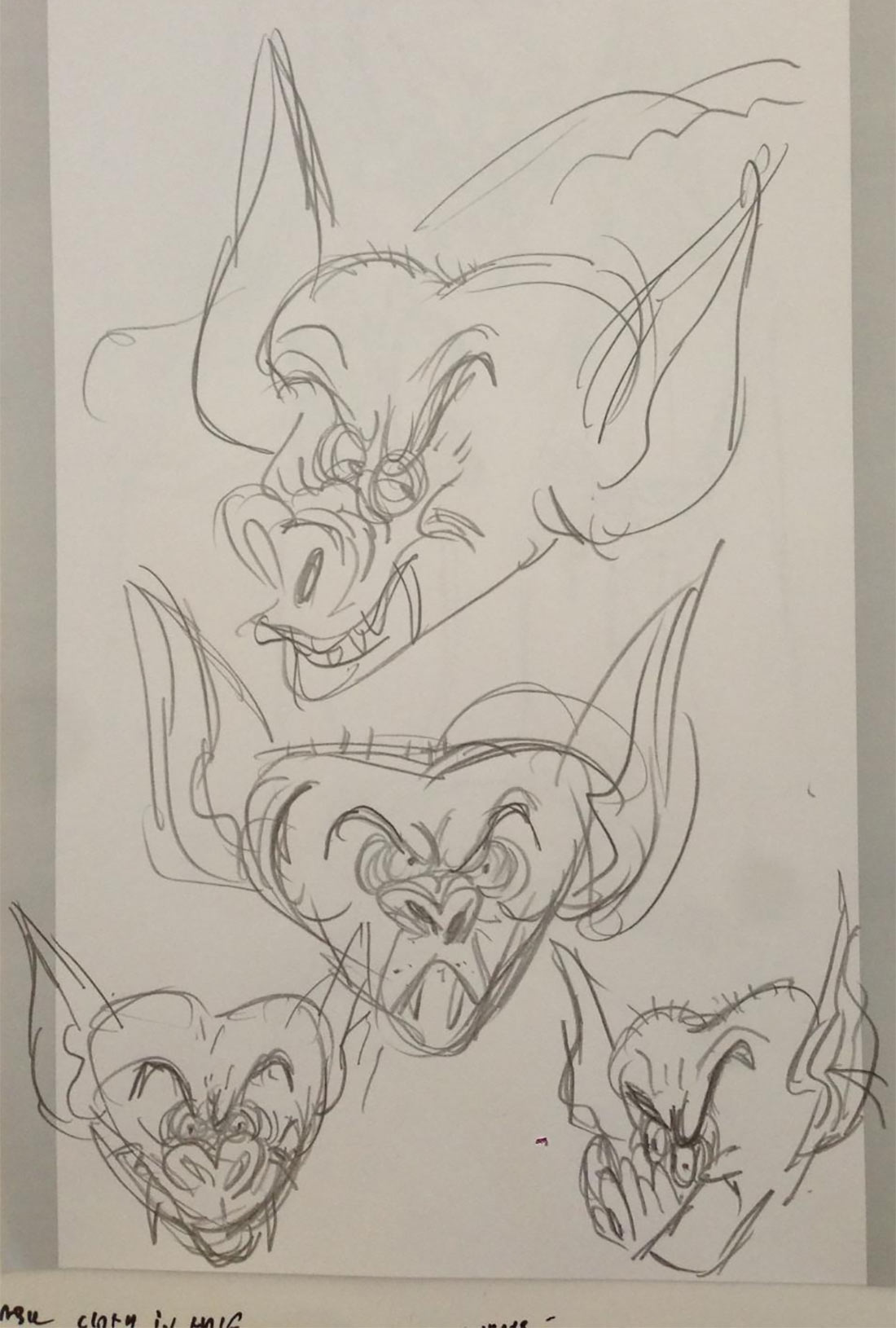
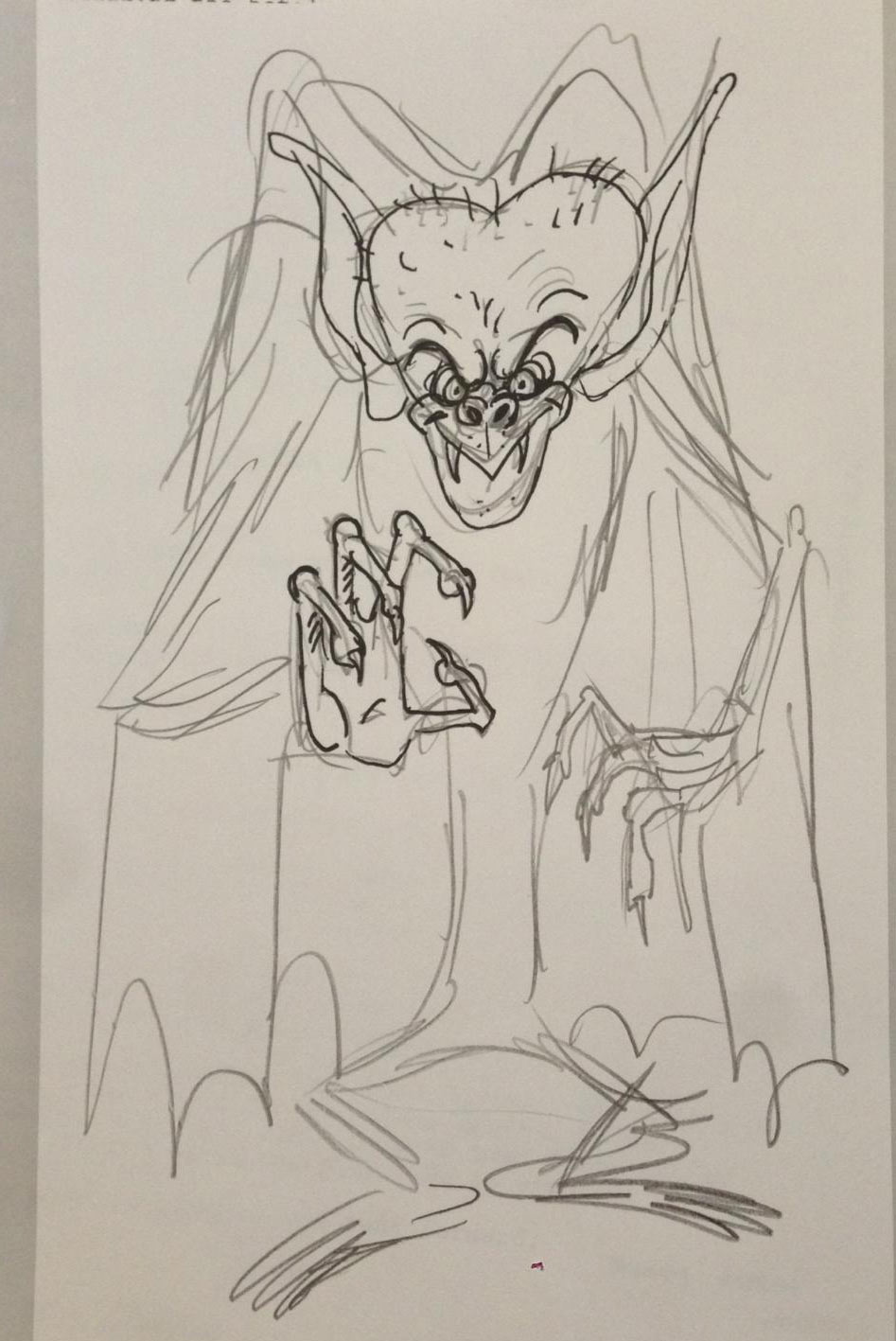
Genndy is an extremely hands-on director who knows very much what he is looking for. The thing that I think he’s most specific about are the characters. When it comes to a new character design, he’s the one who says, “This is a Craig Kellman design,” or “This is going to be a Stephen DeStefano.” He picked the people he wanted to draw the characters, and sometimes he would even send them a preliminary sketch/idea asking for something in a particular vein.
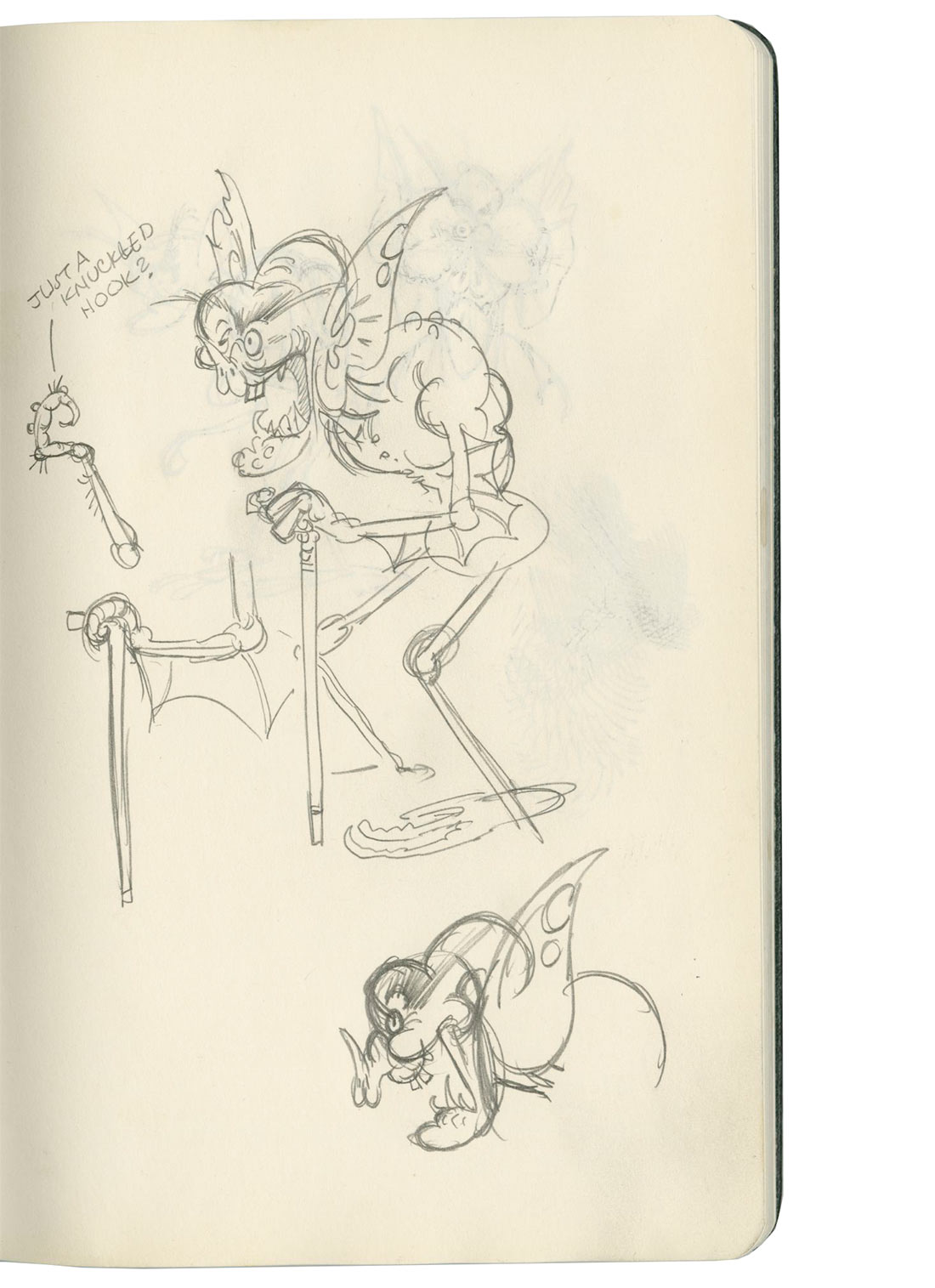

Where I got mostly involved with characters was when it had to make the translation from black and white drawings into color and texture — either I would paint some of them myself and start really filling out the volume of the character, or I’d hand it to who I thought would be the best artist to do that character.
For Bela, I just took one of Stephen DeStefano’s drawings that I liked, and just wanted to try something out so I started painting this thing. I had a picture in my head for these creatures that clearly never see the light of the day and live in a cave, and what the quality of their skin was going to be, almost a translucent fish-flesh kind of thing. I can be a real renderer and a real noodler if need be, and was really happy with the painting because it got the quality of the skin, and the leathery wings and the veins running through it. I loved monster movies as a kid, and this really had all the things that were in my head.

Genndy could have told me to dial it back but he didn’t. He liked all that stuff. I remember when I put that painting up, he said, “This is scary. You’re going to scare kids. But we should work with these kind of textures, and when we get the right kind of facial expressions on this character, it won’t be that scary.”
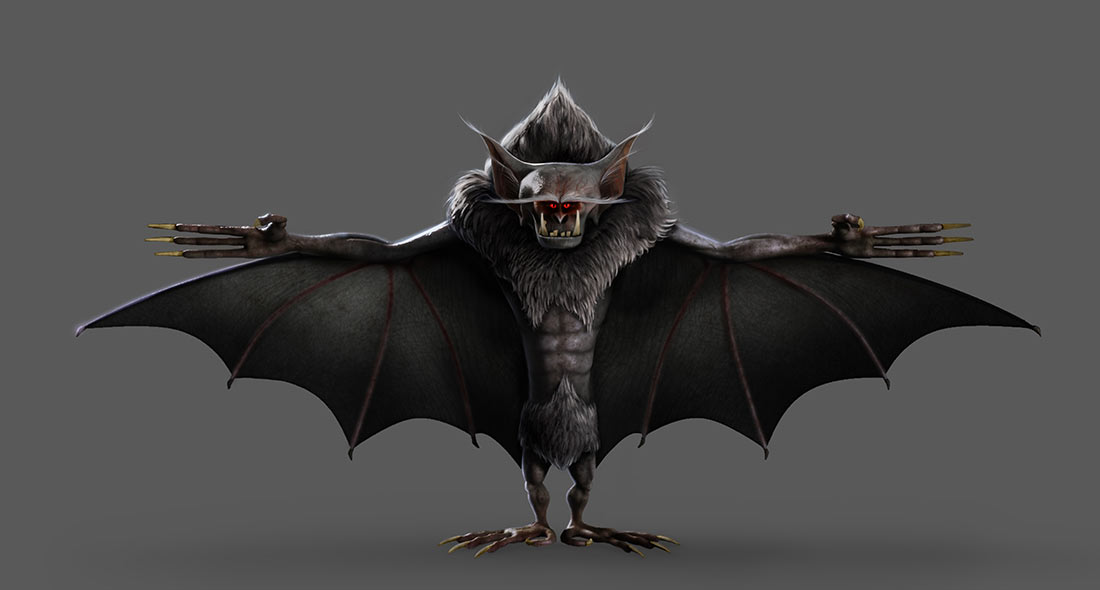
And he wanted to go even further than what the painting had, not so much in the textures, but based on looking at the drawing Stephen had done, he asked our vfx supervisor, “Can we build a muscle system underneath the skin?” Because normally it’s skeleton on the inside and you’re animating just the skin that has the volume in it. He said, “I’d like a skin with real muscles underneath it and then the skeleton,” so that we could really feel when these characters bent their arms and made a fist — you could feel the muscles flex and tense. We took the realism in this character much further than any other character in the Hotel Transylvania universe.
Vlad and Bela’s Environment
Michael Kurinsky: When Vlad was written into the script, whenever they would talk about his location, it would say “Exterior: Vlad’s Castle,” so we started designing castles. At 10 o’clock every morning we had these meetings where we would show Genndy what we were working on, and we put up a bunch of castle sketches, and he was like, “We already have a castle. It’s called the Hotel. Let’s do something different. What if we put him into a more natural structure like a cave or something?”

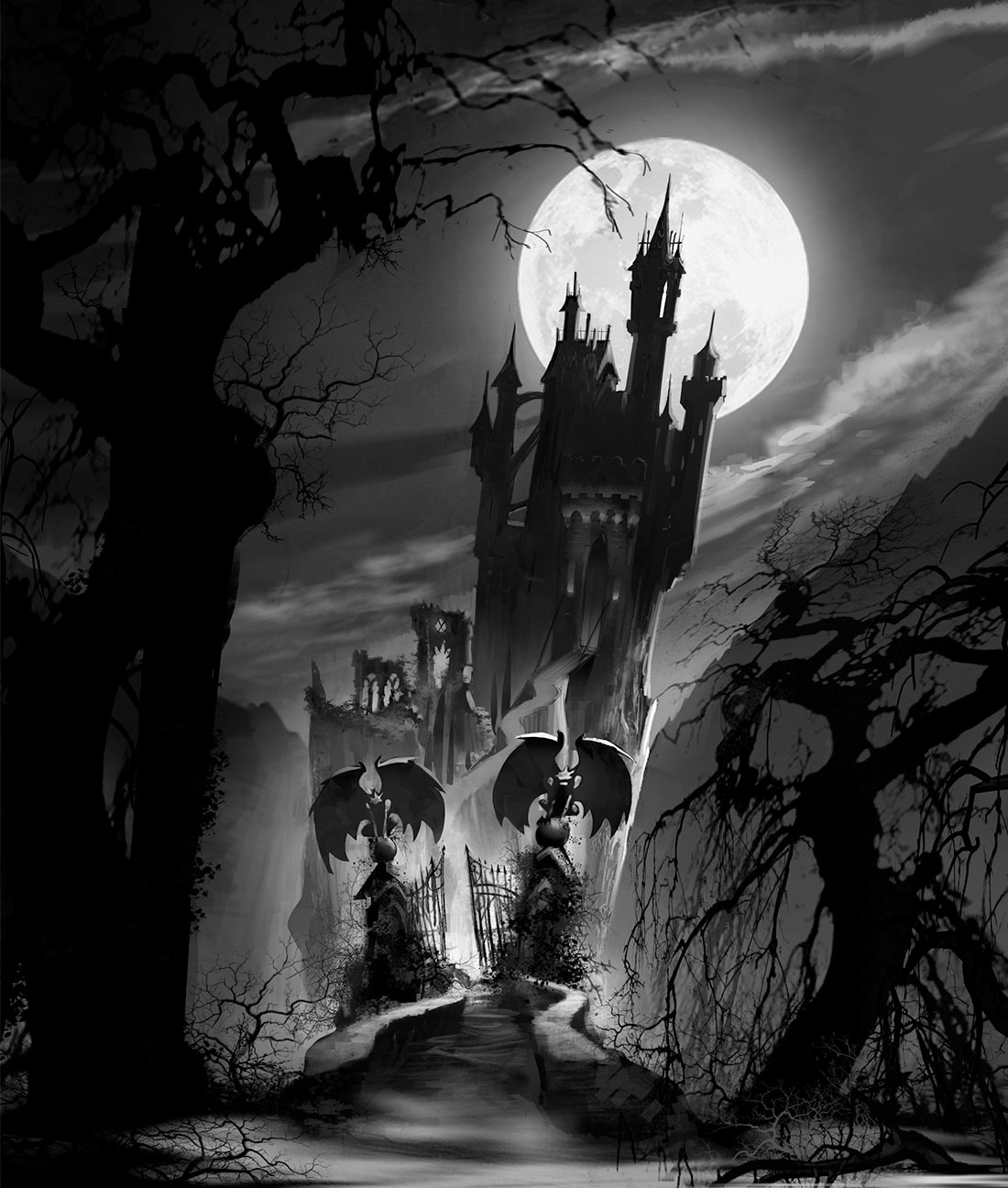
I don’t think Genndy had discussed it with the writers or anything like that. It was just an idea that he had right there in that meeting and we immediately went and attacked it. We started designing this cave, which actually worked great, because Vlad felt like a reclusive hermit in there, like he purposefully was sequestering himself away from his family, from the world, from everything. And it really set the stage for who this character was; it helped support his story.


There was a whole sequence that I absolutely loved and it hurt so bad when I heard it was being taken out for time. There was a sequence called “Meet Vlad,” and it helped strengthen this story of how this person wanted to be left alone. In the sequence, Frank and Drac have to go to Vlad’s lair. To do that, they first had to drive through this windy mountain road and then the car comes to a dead end, and then they had to go down a rocky hill; they had to crawl through a tunnel, and then at the tunnel, there was another steeper hill that was covered in big stickly briar patches, and they kind of bounced down that hill. A trap door would open up and they’d fall down this never-ending hole, and then boom, they landed into an entry chamber where they were greeted by one of the cronies, who escorted them through a little passageway which led into the throne room.

When we were going to do the lighting for it, we started with this really warm lighting at the top of the scene and as they kept moving down, down, closer to Vlad’s lair, the lighting would get colder and colder, so what it was doing was supporting the story of this guy — that he was this cold, angry curmudgeon, and this is where he chose to live. It was the classic example of showing, not telling who this character was. It was all done with visuals and music; there was very little dialogue as they were traversing all this stuff. And you would have felt when we finally got into his presence, “Oh my gosh, I know a lot about this guy already.”




